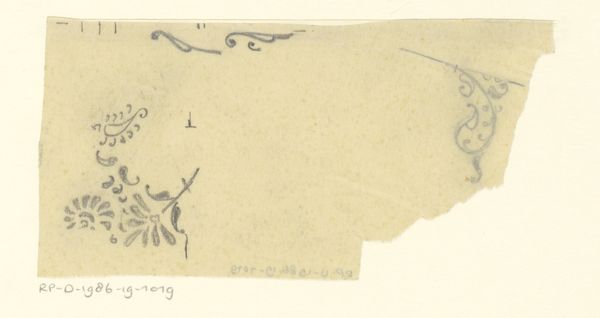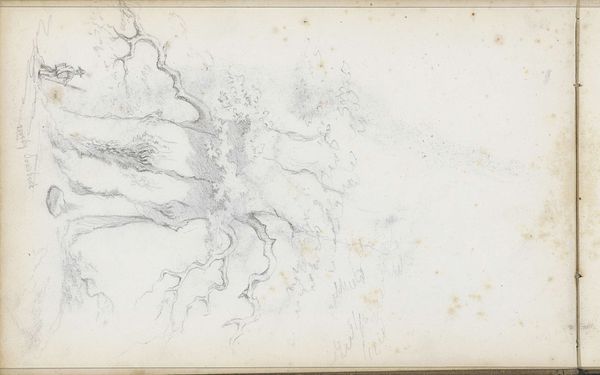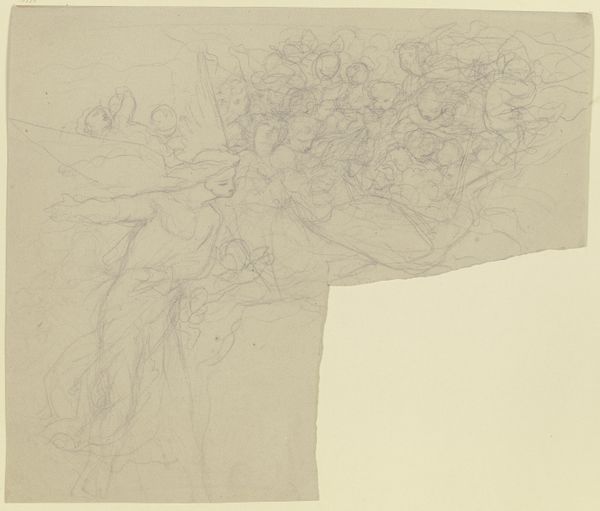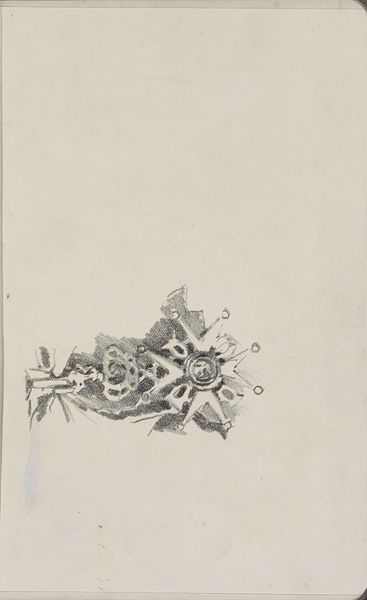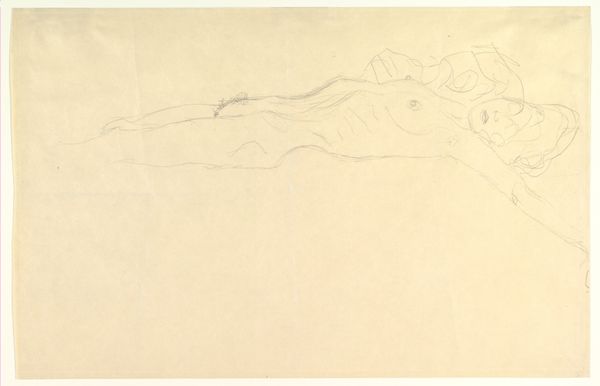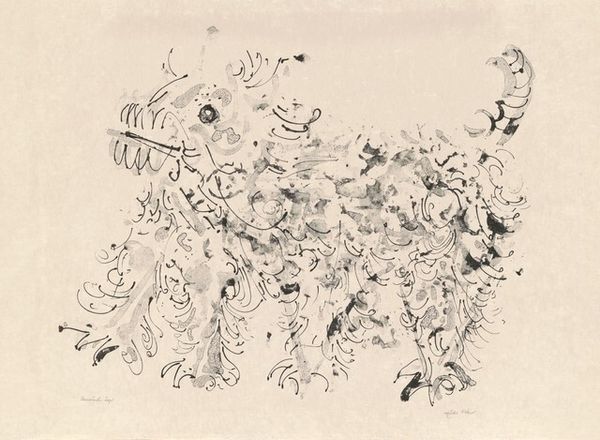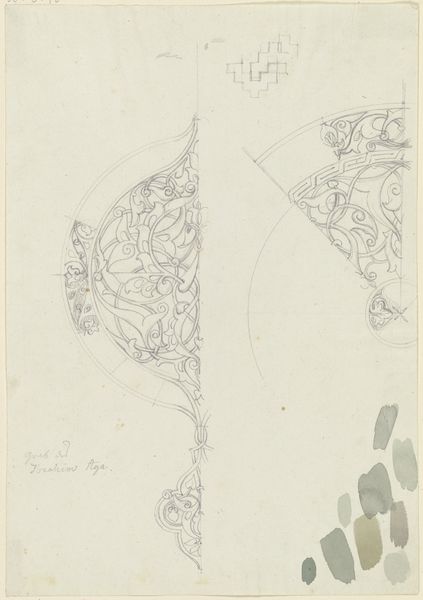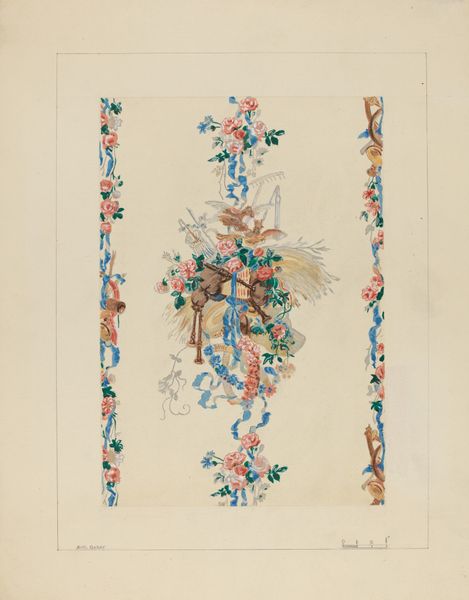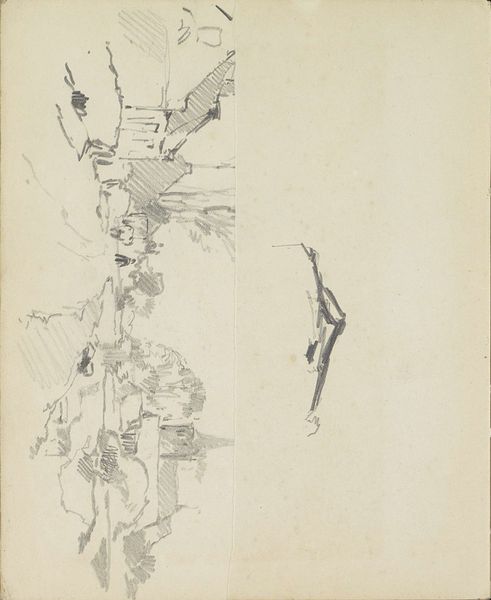
drawing, paper, ink, indian-ink, pen
drawing
paper
ink
indian-ink
romanticism
pen
calligraphy
Copyright: Public Domain
Curator: This drawing, created circa 1850 by Max von Berchem, is entitled "Zur freundlichen Erinnerung 1850," rendered in pen and Indian ink on paper. What are your initial impressions? Editor: Immediately, I’m struck by the intricate layering and the fine, delicate lines. The texture conveyed with what seems like relatively simple tools is captivating. The labor put into something like this...it's almost overwhelming. Curator: Precisely. Notice the sophisticated arrangement of the elements. The staff entwined with the plant-like motif creates a sort of structural vertical, against the graceful, flowing banner and inscription. It is a deliberate interplay of stability and motion. Editor: And that tension makes me think about what “remembrance” actually entails. The production itself becomes a meditation on time and persistence—the sheer act of creating something this detailed by hand emphasizes the physical effort, making the concept of memory tangible and active. Curator: Interesting observation. The choice of Romanticism certainly plays a role, imbuing the piece with nostalgia and perhaps an idealized version of the past. The artist deploys familiar tropes, such as ornate calligraphy and flowing ribbons, to elicit emotion. Editor: The choice of ink too, lends itself well to this delicate dance of dark and light, highlighting every detail, emphasizing its craft. Do we know anything about Berchem’s process for producing a piece like this? Were preliminary drawings involved, or was it drawn entirely freehand? The viewer deserves access to such insight. Curator: These are important questions regarding the social aspect. As a record, this is now in a prestigious setting: the Städel Museum. Here, removed from its place of creation, our encounter highlights the aesthetic values and enduring power that is now placed on the object itself, somewhat devoid of its means of making. Editor: But for whom was this meant to commemorate? How did the material shape the intention, shaping history through memory’s subjective eye? It's essential not to dismiss the human labor embedded in the delicate, refined final appearance. Curator: I agree that both perspectives provide crucial layers of interpretation. In isolating visual devices, we unveil the artwork's intentional construction and artistic strategies of symbolic order. Editor: And yet, seeing that work within its framework highlights labor, intention and reminds that the artistic is entwined with social fabric in which memory finds form.
Comments
No comments
Be the first to comment and join the conversation on the ultimate creative platform.
